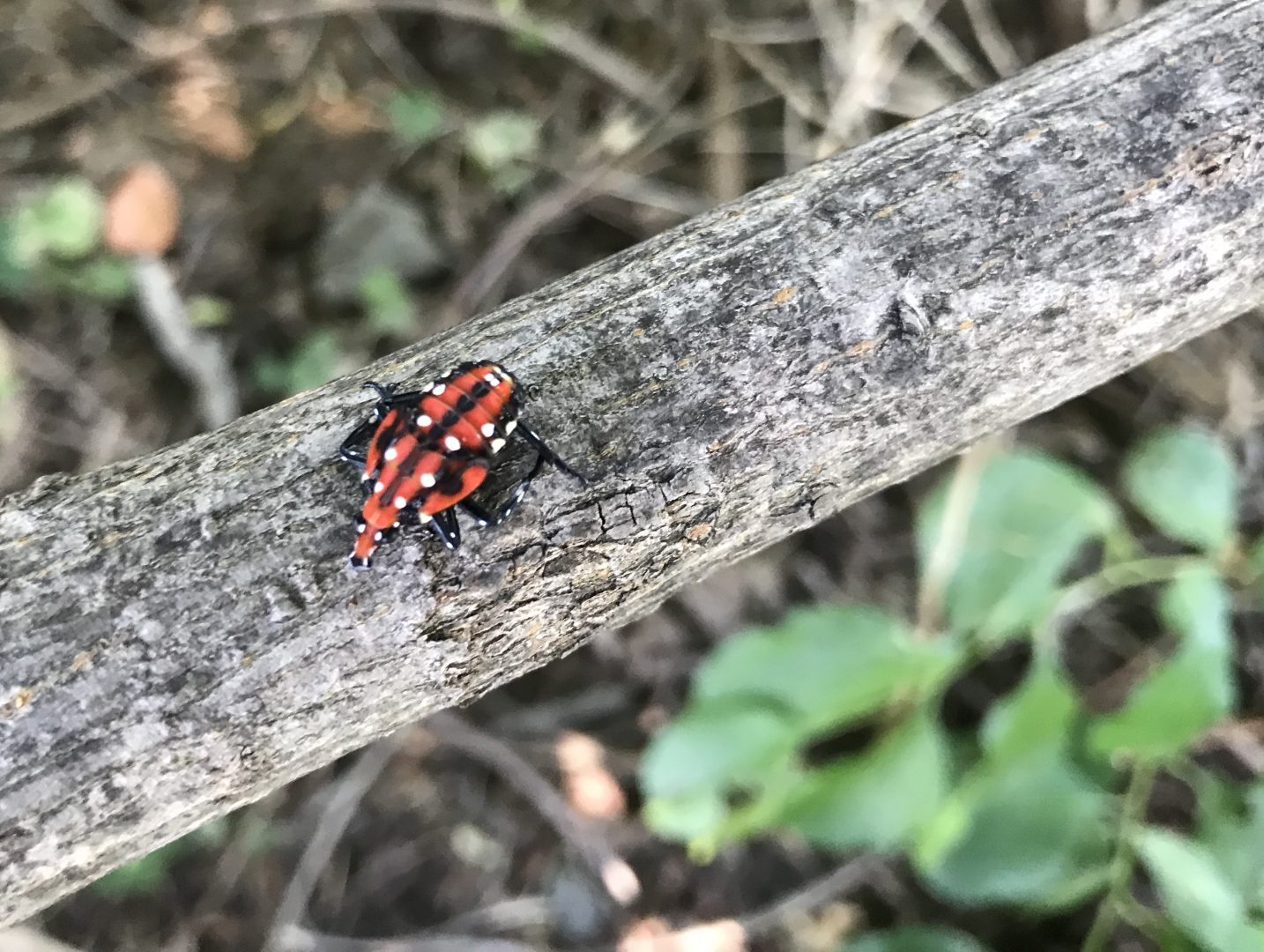
A spotted lanternfly nymph.
Marie Cusick / StateImpact Pennsylvania

A spotted lanternfly nymph.
Marie Cusick / StateImpact Pennsylvania

Marie Cusick / StateImpact Pennsylvania
A spotted lanternfly nymph.
(Harrisburg) — Researchers are hoping to fight an invasive species in Pennsylvania with fungus native to the state.
The spotted lanternfly poses a threat to the state’s $18 billion grape, tree fruit, and timber industries.
Scientists from Penn State and Cornell University are teaming up to study how effective a biopesticide is in controlling the insect.
The study is inspired by findings from the Cornell University scientists that two types of native fungi are fatal to the spotted lanternfly.
In early July, the team used a pesticide with one of the fungi as its active ingredient on plots of land in a Montgomery County park with a notable lanternfly presence.
The bug’s population in the experimental areas has since dropped by half.
“Even a 50 percent control, it gives us a new tool that we can use in forested areas and in suburban and urban areas to try to control spotted lanternfly without any risk to vertebrates, such as birds and pets and so forth, said Rick Roush, dean of Penn State’s College of Agricultural Sciences.
He said he believes the fly is the worst invasive pest since the gypsy moth invaded 150 years ago.
“I’ve never seen a pest before that could kill grape vines within a few years without transmitting disease,” Roush said.
He added, if the lanternfly is not controlled, it could be an economic disaster for the state’s timber industry.
Even if the bugs don’t destroy the trees, other states will be reluctant to import Pennsylvania wood products.
The spotted lanternfly first appeared in Berks County in 2014 and has since expanded to 14 Pennsylvania counties–including Dauphin, Lancaster, Lebanon, and Schuylkill.
The days of journalism’s one-way street of simply producing stories for the public have long been over. Now, it’s time to find better ways to interact with you and ensure we meet your high standards of what a credible media organization should be.